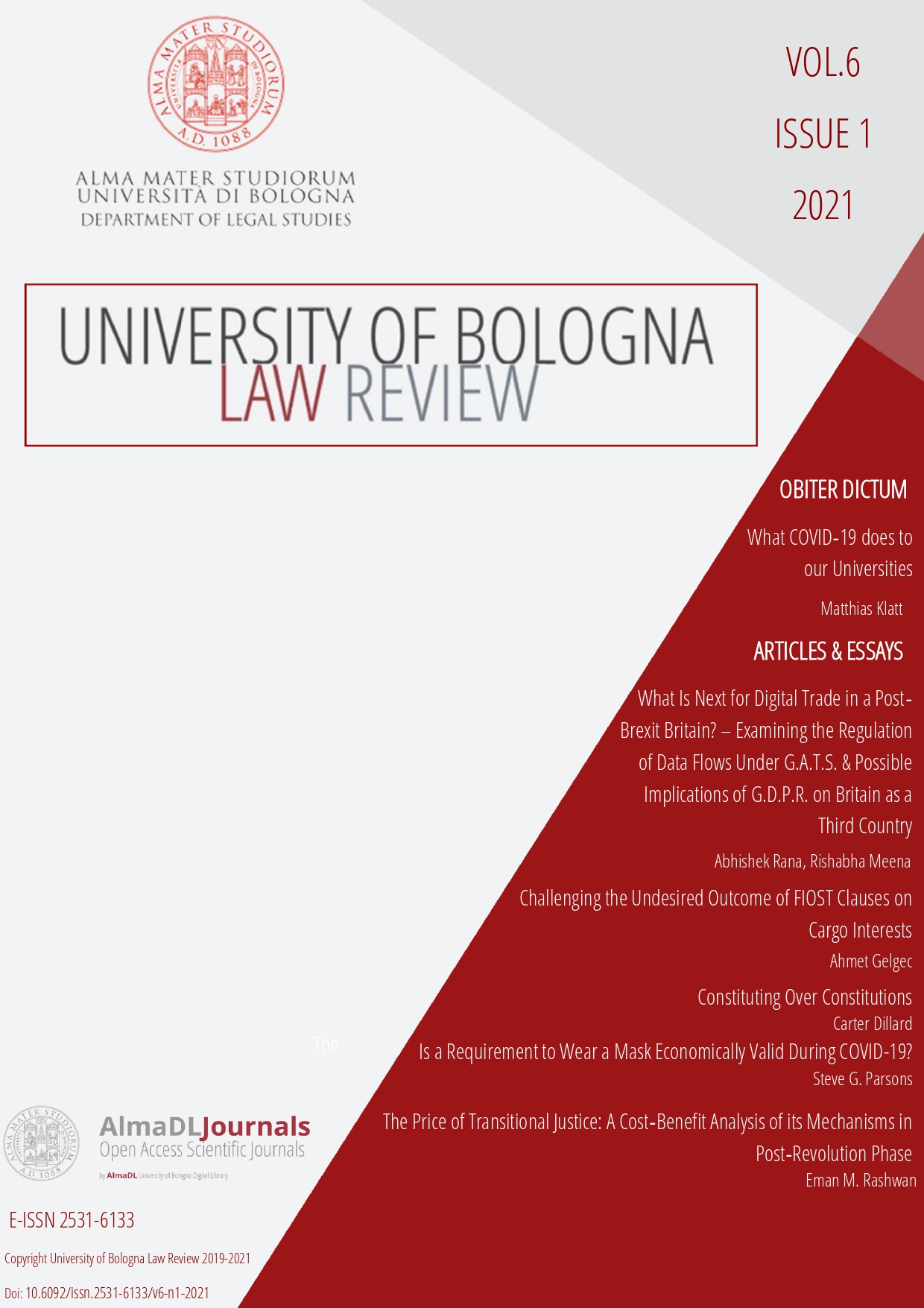The Price of Transitional Justice: A Cost‐Benefit Analysis of its Mechanisms in Post‐Revolution Phase
DOI:
https://doi.org/10.6092/issn.2531-6133/13622Keywords:
Revolutions, Constitutional Law, Economics, Cost-Benefit Analysis, Transitional JusticeAbstract
Transitional Justice [hereinafter T.J.] in the post-revolution phase refers to the policies that aim to deal with the autocratic past-regime violations against its people to achieve accountability and democracy and promote human rights and the rule of law. To achieve these goals, the United Nations, within its Rule of Law Initiative, issued in 2010, a set of five mechanisms that work as guidelines for nations recovering from conflicts. I argue that whatever the mechanism or combination selected by a society transforming from an autocracy into democracy is, the nature of these mechanisms requires a trade-off between multiple considerations. To explain this inevitable trade-off, I go through each mechanism in detail, analyze it from both legal and economic perspectives, and then provide a basic cost-benefit analysis. I suggest that transitional justice as a constitutional arrangement requires a holistic approach in its adoption and application because this initial cost-benefit analysis cannot be standardized for all cases. I also suggest that transitional justice policies that take into account proportionality, a combination of different mechanisms, customization of the mechanisms upon the relevant case, and adopting these policies in the formality of basic or organic laws may be expected to have the most effective outcomes achieving the goals of T.J. with the least legal complications.
Downloads
Downloads
Published
How to Cite
Issue
Section
License
Copyright (c) 2021 Eman M. Rashwan

This work is licensed under a Creative Commons Attribution 4.0 International License.











